This piece is the second instalment of a two-part series ‘On the Road’ by Madhuri Mondal on how fishworkers have migrated in the past, and migrate in the present. Click here to read part one, on how and why Srikakulam’s fishers spread from Myanmar to Gujarat in colonial and newly independent India.
The recent COVID-19 lockdown revealed crises that disproportionately affected otherwise invisible migrant workers across the country. Yet, beyond short-term media attention, the lives and journeys of these workers have been shaped by long-term shifts in development and economy in India. Scoping studies carried out under Dakshin Foundation’s community wellbeing and environment programme in Odisha and South Andaman, revealed that migration is now a way of life for many fishing communities.
In all the villages Dakshin surveyed in Ganjam, the southernmost district of Odisha, migration is inextricably linked with the various issues faced by the fishing community: ranging from dwindling fish catches, to a lack of alternative livelihoods available locally. In some villages, around 80% of the active fishermen had migrated to other states during the monsoons. As a village leader informed us, “Fishers who have machine boats, they stay. The ones who don’t, migrate to other places for work.”
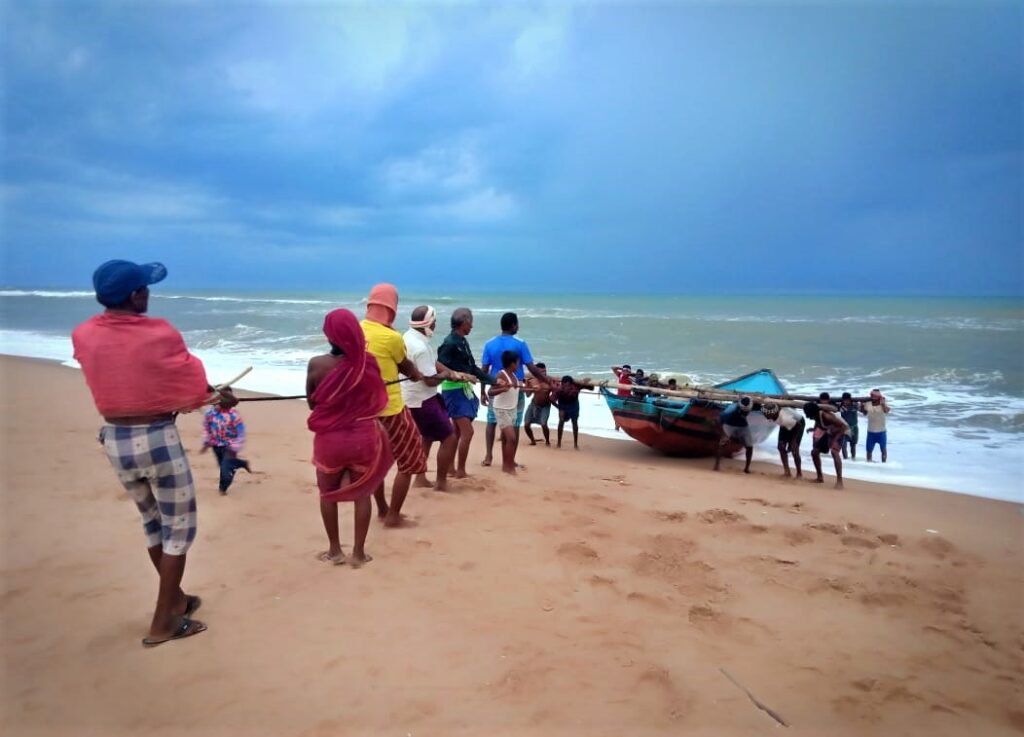
Out of the 200 families in that village, around 140 men migrate every year for work. On asking why they leave, one fisher remarked, “There is no income during this season. The weather is rough and it is risky to venture out in the sea. Boats can topple”. In another village, the village committee president, secretary, and ward members were all absent during a field visit as they had migrated to find work, leaving the village governance in some state of jeopardy. Where exactly are these fishworkers migrating to, and how do these intricate patterns affect their lives and their families?
The Where and When of Migration: Locations and Seasonality
In spite of the visibly large scale migration undertaken by migrant fishworkers in India, due to a lack of formal data collection on migrant fishers in their home or host states, there is no consolidated official data available on their numbers.
“The fisheries department doesn’t have any data on the number of fishers migrating from Srikakulam [in Andhra Pradesh] as they migrate of their own will. We only have the numbers of stranded fishers who have returned to Srikakulam post the lockdown,” says P.V. Srinivas Rao, the Deputy Director of Fisheries at Srikakulam, a district that in 2003 sent out approximately 56% of its fishing population of 25,582 in search of work.
The lockdown response work undertaken by Dakshin to help stranded fishworkers across coastal states brought to light the countrywide crisscrossing of huge numbers of migrant fishworkers. Despite the lack of consolidated data on the movement patterns of fishworkers, a pattern of migration was deduced on the basis of ground-work and interacting with other researchers and fishworker unions.
Broadly speaking, the majority of the fishworkers employed in mechanized fishing or in allied fishing activities hail from the fishing villages of the east coast of India, and largely migrate to the harbours of the west coast and Tamil Nadu (traced in the map below). On the west coast, the fishing season is mainly from August to May. This is when migrant workers flock to these states, returning to their native states only in June once fishing is suspended due to the uniform fishing ban and the onset of the southwest monsoon.
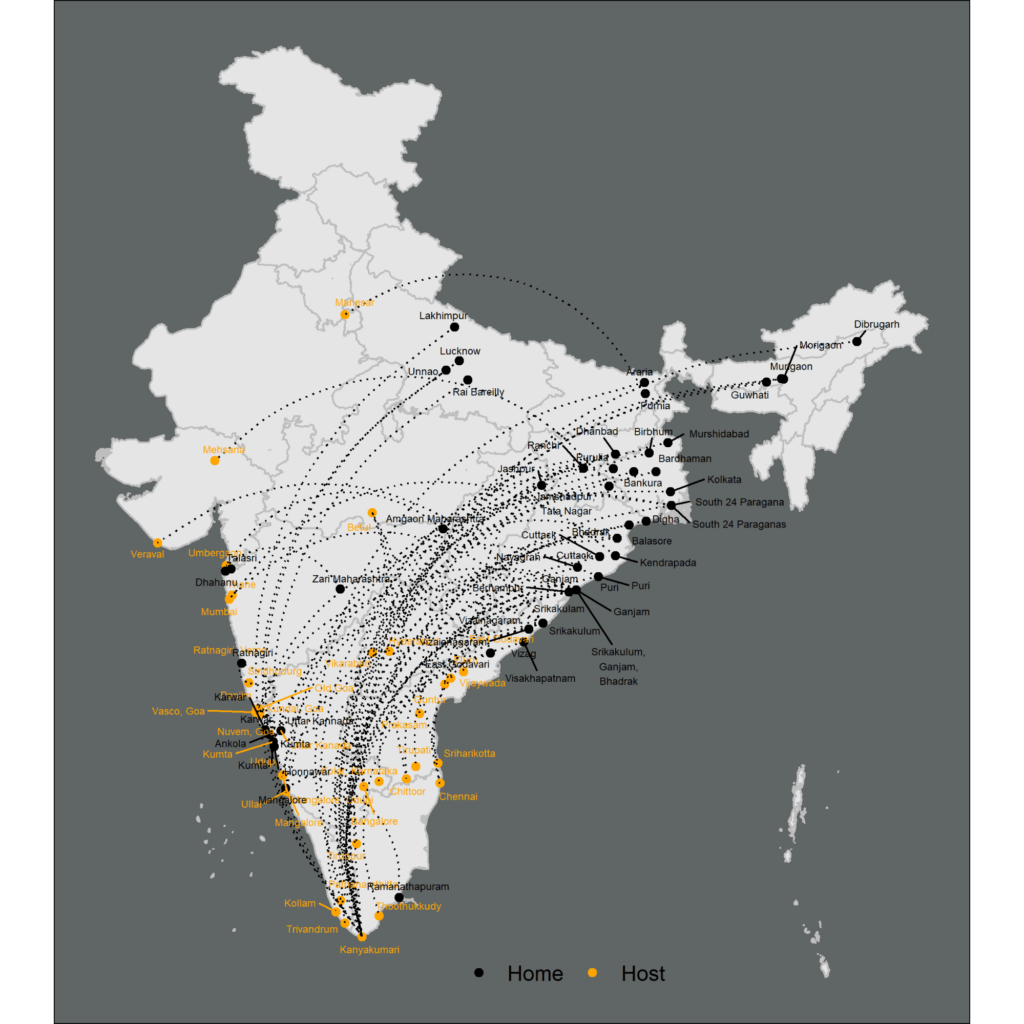
Official data collected by the Central Marine Fisheries Research Institute over a decade ago suggests similar trends. As per the CMFRI census of 2005, around 54.2% of fisherfolk engaged in fishing-related activities belong to states on the east coast, such as Odisha (20%), Andhra Pradesh (20.2%), and Tamil Nadu (13.8%). On the other hand, the marine census of 2010, shows that out of a total of 35,228 trawlers, Gujarat accounted for the maximum number (32.9%) followed by Tamil Nadu (16.4%), Maharashtra (15.9%), and Kerala (10.4%), highlighting at the dominance of trawl fishing on the west coast which employs a large number of laborers.
More recent figures attest to this pattern too. A study by the International Collective in Support of Fishworkers (ICSF) in 2016 estimated the number of fishworkers migrating from coastal districts of Andhra Pradesh to Gujarat’s Veraval and Porbandar harbour, to be 25,000 every year.
“From South Bengal, between 10,000 to 20,000 fishers migrate to Kerala, Karnataka and Tamil Nadu every year during August,” estimates Milan Das, the General Secretary of the Dakshinbanga Matsyajibi Forum, a fishworker union from the South 24 Parganas, West Bengal. “Post cyclone Aila in 2009 more fishers started to migrate down south”, he added.
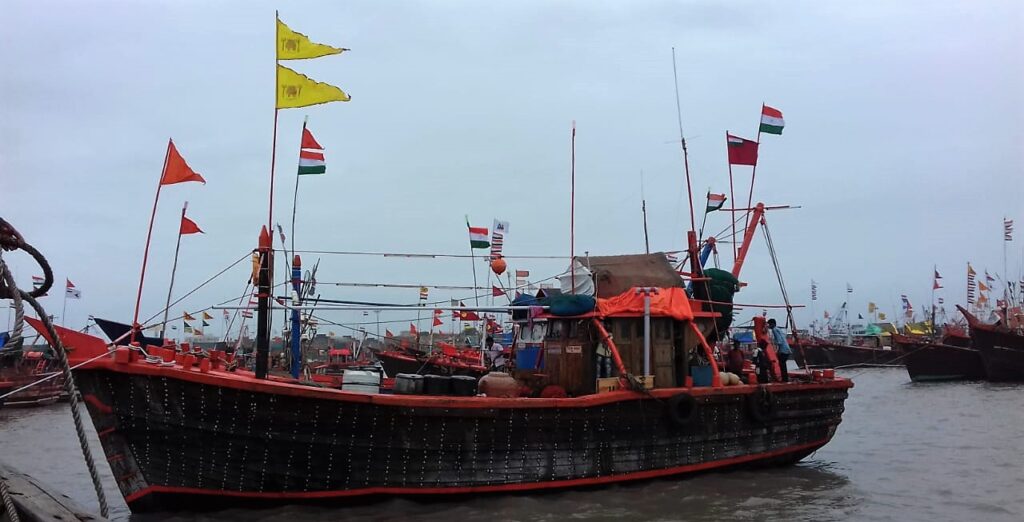
A large number of workers also migrate from non-coastal states like Jharkhand, Chhattisgarh, and Uttar Pradesh to work in the sector too. A study on the employment scenario and labour migration in marine fisheries from 2005 estimates the number of workers from non-coastal states involved in active marine fishing in coastal states to be close to 4 lakh. Beyond the broad patterns of migration of fishworkers, a closer look at their lives reveals the pressures they undergo once at their destination.
Life in an Alien Land and Sea
The lives of migrant fishers are challenging, right down from the recruitment process. Take the case of Gujarat for example–each trawl boat employs nine men, including the boat captain, or tandel. A month before the onset of the fishing season, the tandel receives an advance of 6-7 lakhs from the boat owner, or seth. He then recruits prospective crewmembers, or khalasis, from fishing villages through informal contracts. The khalasis are paid their salary in advance and then are practically bonded to the boat for that season. They cannot abandon the boat before the completion of the contract period.
Apart from the recruited migrants, ‘freelance’ migrants (a category of migrants who are not approached by any tandel) also reach these destinations looking for work. Many are forced to wander for months searching for employment, and even when they manage to secure it, they don’t have proper shelter or food. Most of them find work in the allied fishing industry which requires labour for transport, sorting and processing units, ice factories, and net mending.
Migrant fishers spend almost eight months on the boats, only to set foot on land for 24 hours to refuel after a fishing trip. With freshwater largely unavailable for bathing and washing, fishers also suffer from several health issues due to long fishing trips and unhygienic living conditions.
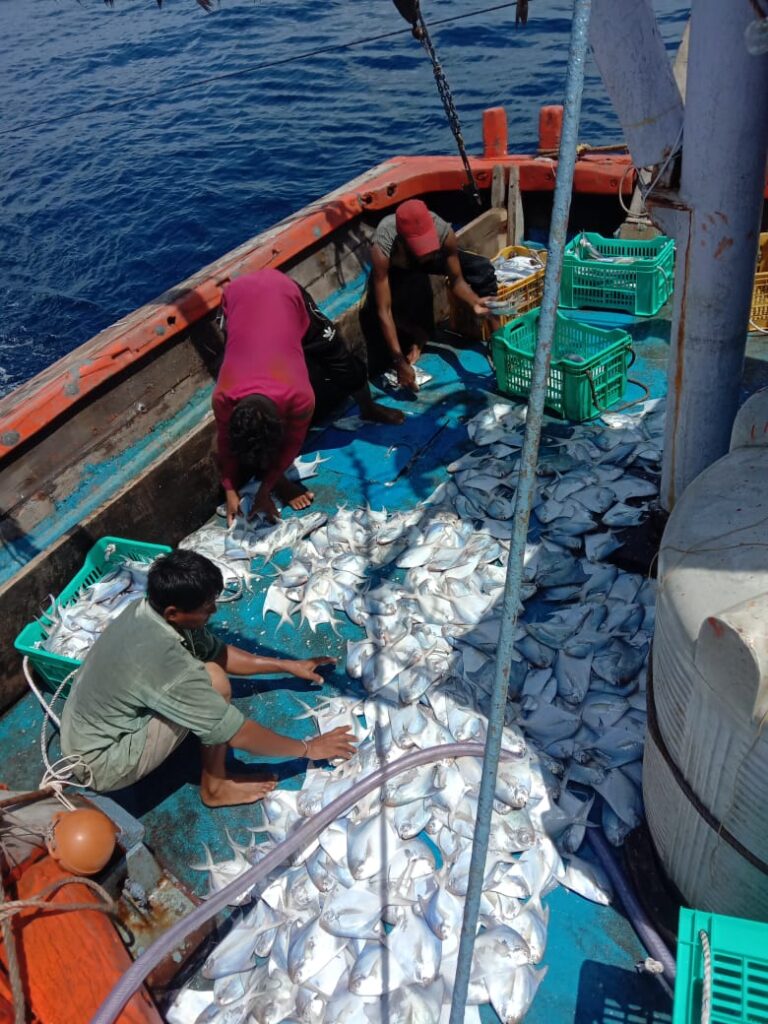
Experiences of work for migrants vary from one state to another. In many states they are exploited by boat owners in terms of payment and working conditions. They also get into cultural conflicts with the locals, sometimes forcing them to make difficult economic choices. As a migrant fisher from West Bengal Amal Das, says, “In Karnataka, we earn around ₹20,000-25,000 monthly. In Kerala, we can earn even more. However, many workers prefer to go to Karnataka because the working conditions are better there compared to Kerala. In Kerala, we face issues with the local crew because of confusion while trying to understand their instructions.”
More worryingly, reports of missing fishing boats are frequent, while around two to six Andhra migrants are caught and jailed by the Pakistan navy each year. The use of child labour in the mechanized fishing sector is an issue that cannot be ignored either. Children accompany the crew on fishing trips where they work as deckhands and cooks while learning fishing from the elder members. They state that this is an important source of income for their family, and that educated youth from fishing communities lack job opportunities. Such is the complex nature of migration: it provides a tangible opportunity, but also leaves deep impacts on the social structures of communities.
The Vacuum Created Back Home
The impacts and working of fishworkers’ migration aren’t confined to the migrants alone, but are felt by the families they leave behind. Earnings sent by the men do not reach home in time, leaving the family–consisting of women, children, and elders–to periodically fend for itself.
Women look for income opportunities locally, and in many instances, borrow money for their survival. Children’s education gets hampered by these inefficiencies, at times forcing them to support their mothers by working on the beaches. There is a huge psychological impact on women, who live in anxiety for the well-being of their husbands and families. In the absence of regular funds, it is also often difficult to take care of the sick and elderly.
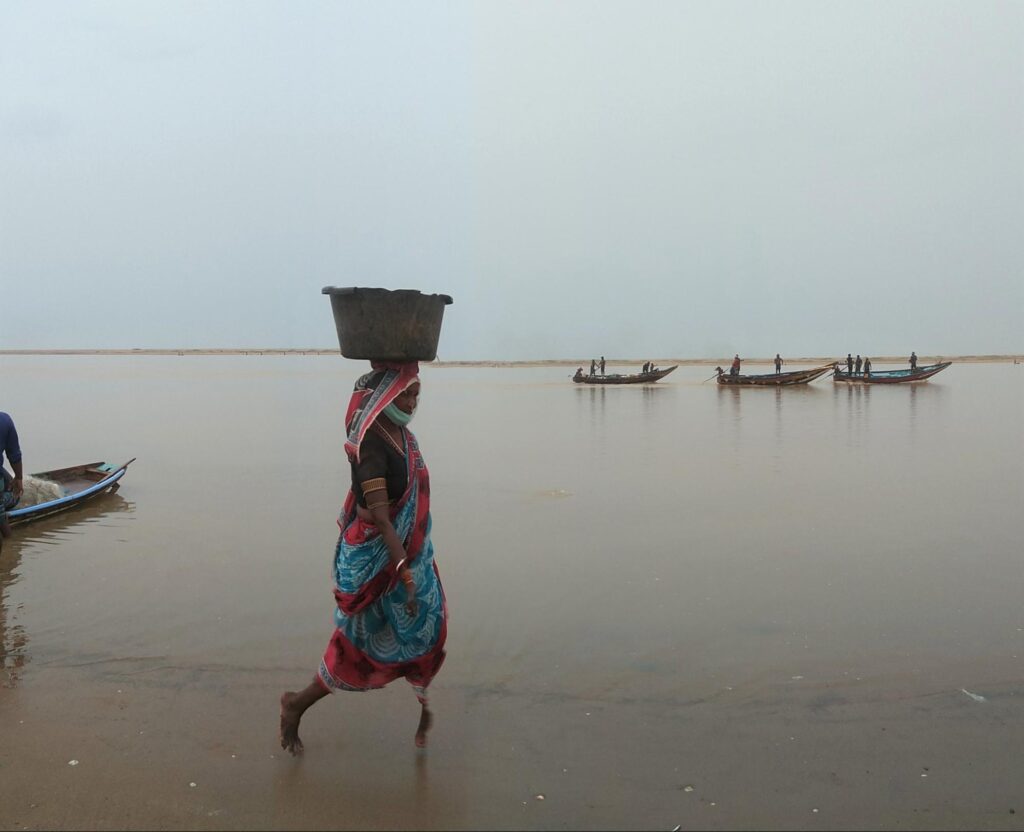
The absence of a large number of active fishers from fishing villages has a ripple effect that causes many other dependent stakeholders like petty fish traders, fish processors, basket weavers, transporters, ice, and salt-makers to lose their livelihoods. There are other social repercussions such as the reduction of community cohesion and the disappearance of traditional governance systems from fishing villages.
Picking up the Pieces Post Lockdown
“India lacks a composite law regulating labour in fisheries. The weak implementation of labour laws and interstate migration rules (..) combined with migrant fishers being left out of unions or associations in labour-receiving states (..) makes them doubly vulnerable to exploitation and abuse,” explains Manas Roshan in his 2016 report on migrant fishers.
This is exactly what unfolded during the lockdown–as the migrant fishers were not properly organized, they faced several severe issues that the government was slow to address, including being stranded on their vessels for many days without drinking water.
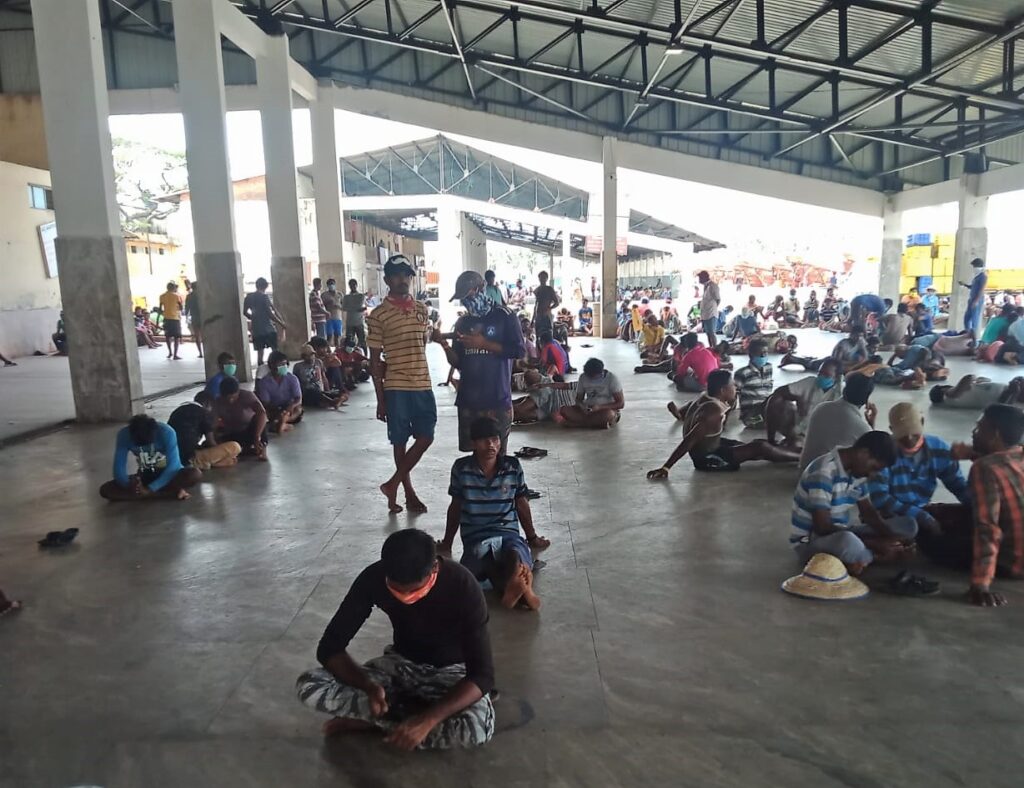
Once the lockdown was lifted, the stranded migrants gradually reached their villages; however, they now face the dilemma of whether to return or not. While some have taken up work in local fisheries, the wages are not as high as those in the destination states. Boat owners have added to the dilemma, by requesting the workers to return as the fishing season has now commenced on the west coast.
Yet, the workers are still concerned about the pandemic. “We have decided to not travel to Gujarat until the pandemic situation improves. If someone falls sick there, who will take care of them?” asks M. Appanna of Srikakulam, who works as a tandel in Veraval, Gujarat. Appanna is also the President of the Uttarandra Valasa Matsya Karula Samkshema Samiti (UVMKSS), a new union of migrant fishworkers in Northern Andhra formed after the lockdown. “This decision to not travel was collectively taken by the members of the union.”

Beyond collectivizing, the UVMKSS seeks to address the glaring lack of data on migrant fishers too. “The union will draw membership from 10,000 fishworker families from northern Andhra: 80% of them from Srikakulam, 15% from Vizianagaram, and 5% from Vishakapatnam,” says Appanna. “We have collected the details of all the 800 boat drivers who work in Veraval from Andhra. In a few days, they will collect the details of the eight crew members from Andhra who work on their boats. Through this, we hope to collect detailed information about the 6,400 workers who migrate to Veraval every year from Andhra.”
On how the union aims to improve the working environment and safety nets for fishers, Appanna says, “The union will ask the boat owners to pay it ₹8,000 in advance for a crew member each year. If any accident occurs, the union will take care of the situation without relying on the owners at that time.”
In the absence of much state regulation, the formation of a union of migrant fishworkers in Andhra is clearly a step in the right direction of gradually addressing the myriad issues of exploitation affecting migrant fishworkers today. Along with documentation and the recognition of this large-scale migration by the host and destination states, petitioning for a formal contract between the owners and crew members detailing the terms of work, remuneration, and insurance policies are also necessary. Nevertheless, if mirrored in other states, unions can give migrant fishworkers across the country a collective voice to fight exploitation and negotiate better terms of work and payment, which in the long run, will hopefully make migration a less desperate affair.
For more on coastal India’s past, present, and future, curated by The Bastion and Dakshin Foundation under “The Shore Scene”, click here.
Featured image: Fishing vessels in Malvan, Maharashtra, courtesy of Manini Bansal. | Views expressed are personal.






